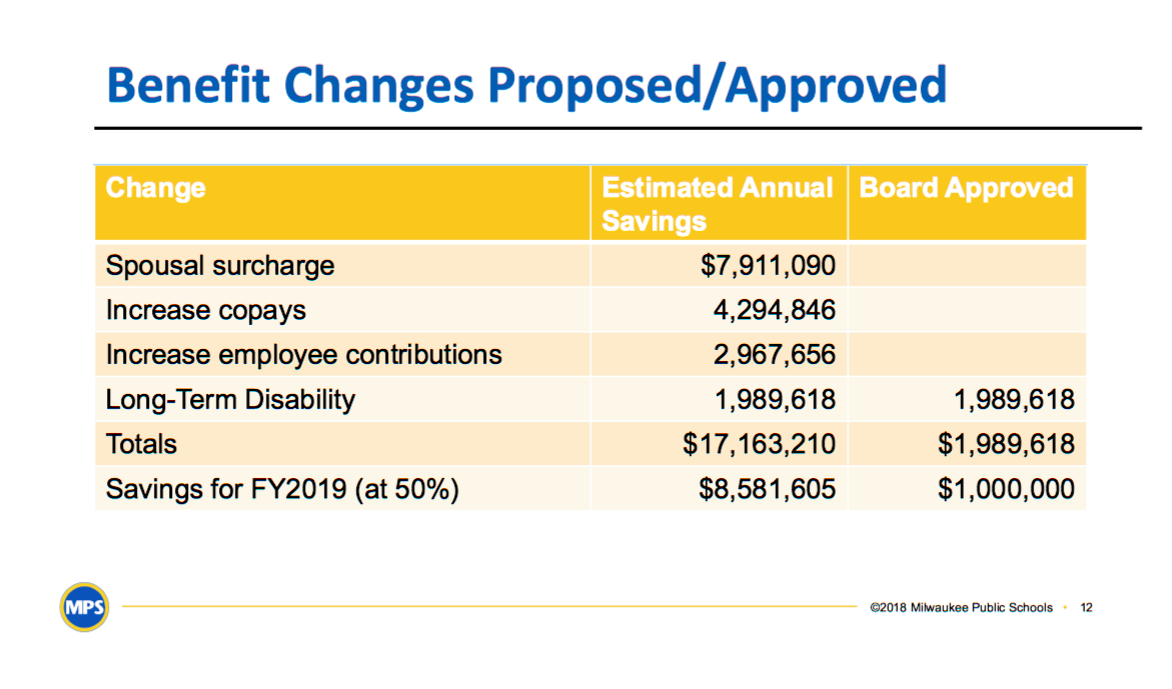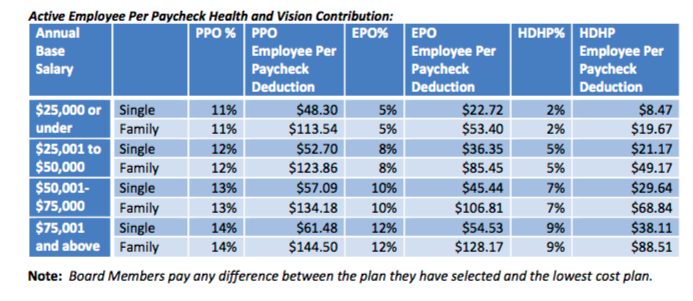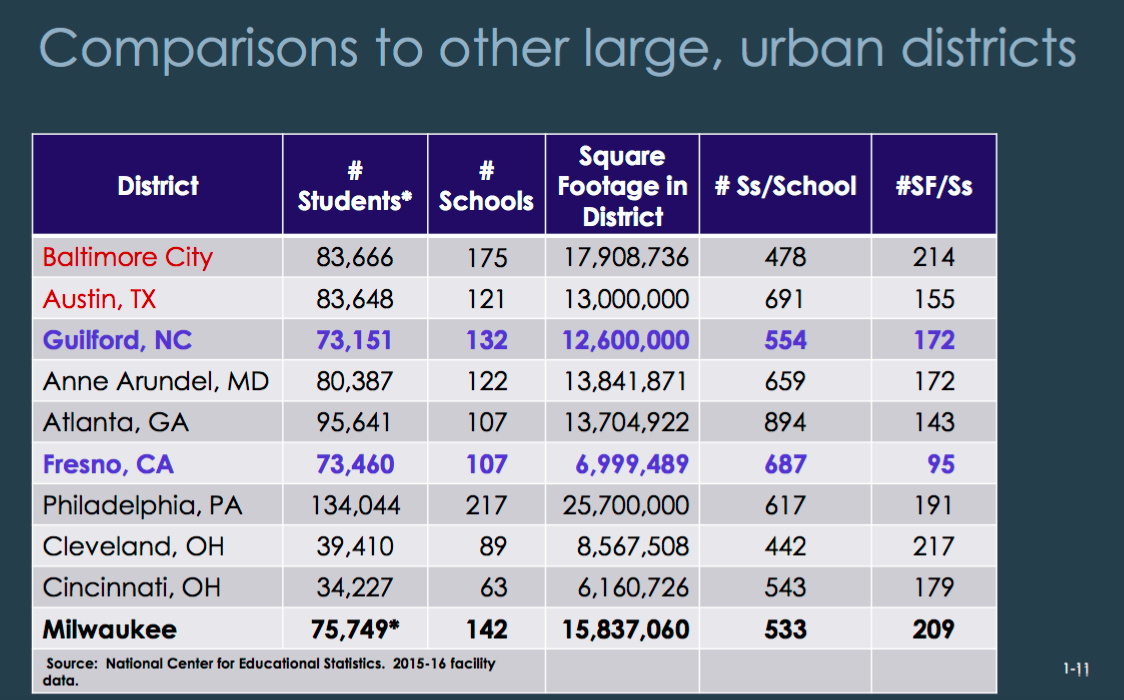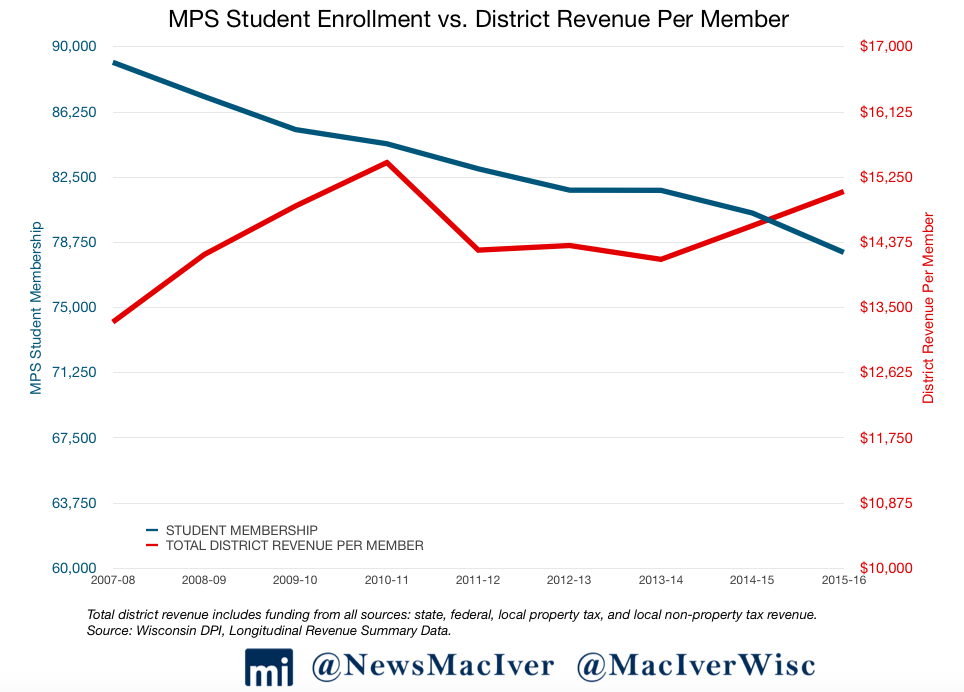
Teachers contemplates a strike as they #fightforfunding, while board punts on savings
May 15, 2018
By Ola Lisowski
It’s showtime.
With school board meetings slated for Tuesday and Thursday evening, Milwaukee Public Schools (MPS) will move closer to finalizing its $1.17 billion 2018-19 budget this week. Tuesday’s meeting will bring formal board approval of a small employee benefits change, while Thursday’s agenda includes a budget public hearing that’s sure to be packed.
The budget document provides cost-of-living increases and implements a three-year path to a $15 minimum wage, but makes no significant changes to exploding benefit costs.
On the backs of a teacher protest and a Democratic gubernatorial candidate forum on education over the weekend, the debate is heating up – and sparks are sure to fly. That’s not to mention remarks by Gov. Scott Walker that it may be time to “shake things up” in the state’s most troubled district, an off-hand remark that sparked a half-dozen editorials.
Plus, of course, the hunger strike. Substitute teacher and union leader Alex Brower has made headlines for his hunger strike protesting the lack of healthcare benefits for MPS substitute teachers who work more than 32 hours per week.
Yet amidst all this high-profile drama, almost all of the so-called “tough decisions” before the board do little more than punt MPS’ financial problems down the road.
The budget document provides cost-of-living increases of 2.13 percent for most employees. It speeds up the implementation of the “Road to 15” that’ll have every MPS employee making a minimum of $15 per hour in three years rather than in five. It makes no significant changes to exploding benefit costs. 
The board members know it, too. At the May 3 budget hearing, numerous board members said they weren’t happy with the document in front of them, and that more fundamental changes would need to be made next year. For the time being, they called on the public to join them in Madison to protest for more funding (that particular rally never happened).
While the adults put off tough decision-making until “next year,” another class of MPS students are graduating woefully underprepared for the real world. Why? Despite a billion-dollar budget, MPS can’t help but spend in all the wrong places.
MPS employs 356 administrators, with an average total salary of $100,253 and average fringe benefits totaling $26,555.
On Tuesday, the board will approve a recommendation to eliminate the district’s long-term disability plan for employees. Just four people used the plan last year, costing the district nearly $2 million. That was one of several cost-savers put forth by outgoing superintendent Darienne Driver last month, but it was the only one that the board approved – leaving more than $15 million in savings on the table.
Per the district’s own summary of benefits manual, employees generally receive benefits once they work 30 hours per week or more. That’s a far cry from the standard 40-hour work week. So, too, are many of the other standard benefits at MPS.
For example, most full-time employees have the option to get a bonus of $50 per month or $500 per year if they are covered by another employer’s health insurance and choose not to go with MPS’ coverage.
The district offers three main plans for health insurance. Depending on what kind of plan an employee chooses and how much they make, MPS employees pay between 2 percent and 14 percent of their health insurance premiums. That appears to be in violation of Act 10, which required that employees pay 12 percent of their monthly insurance premiums.
MPS’ own projections show the district will spend hundreds of millions more on benefits in the years to come, far outpacing spending on classroom initiatives and, you know, the actual teaching of children. Medical costs are expected to inflate by 5 percent annually, and prescription drug costs by 12 percent. The district’s five-year forecast estimates a 14 percent increase in overall spending by 2022. More than one-third of that hike will go just towards benefits. Compared to that, additional pupil services and classroom spending barely make a dent.
Both the number of bureaucrats at MPS and their pay is unsustainable. MPS employs 356 administrators, with an average total salary of $100,253. Average fringe benefits total $26,555.
Of the 336 administrators with publicly-reported salaries, a whopping 156 employees earn salaries of more than $100,000. At Central Office alone, 78 administrators earn an average total salary of $111,624.
Besides its financial structural issues, the district has actual structural issues, as well. A facilities study unveiled last month showed that the district’s 15.8 million square feet far outpace its enrollment, especially when looking at other large, urban districts. While 42 schools are over 110 percent enrollment capacity, another 42 are operating at less than 70 percent capacity. At the same time, the district has spent more than $10 million on utilities of empty school buildings over the last decade.
The facilities study presentation writes, in clear, bold font: “too many schools, too few students.”
Without a major change, the problem will only get worse. One so-called solution, offered by the facilities study, is spending $969.5 million to upgrade every school to an “85” or “good” rating.
The administration continues to insist that enrollment has stabilized – but a long-term view shows the district has lost more than 10,000 students in ten years, even while the population of school-aged children in Milwaukee grew. For many reasons, families are choosing to send their kids elsewhere.
Why wouldn’t they? Kumbaya only gets you so far. To people outside bureaucrat world, there’s no excusing cutting 80 teachers while adding 9 administrators. Breaking ground on a $5.7 million stadium, like the district did this week at Vincent High School, is questionable. And giving Central Office administrators $100,000 in raises without board approval while services to schools are cut? Downright sad, if not simply angering.
Of course, MPS administration provided a well-worded excuse for every one of those spending decisions, not that it matters. Milwaukee students still perform among the worst of any similarly-sized school district in the country with just 15 percent of fourth graders proficient in reading and math.
So while the adults point fingers at each other – with one hand always protecting their own pockets – the kids wait. Yet again.



